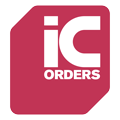The IC integrated chip, often simply referred to as an integrated circuit (IC), is a fundamental component in the world of electronics. It’s a set of electronic circuits on a small chip of semiconductor material, typically silicon. The IC is a cornerstone of modern electronic devices, from computers and mobile phones to appliances and vehicles.
ICs have revolutionised technology and continue to shape our digital future. This article delves into the intricacies of the IC integrated chip, its history, how it works, its types, and its applications in various industries.
Origins of the IC Integrated Chip
The invention of the IC integrated chip was a significant milestone in the history of electronics. It was developed in the late 1950s by two engineers working independently: Jack Kilby of Texas Instruments and Robert Noyce of Fairchild Semiconductor. Kilby is credited with developing the first working IC, while Noyce refined the design and made it more practical for commercial production.
The IC integrated chip was a revolutionary invention that miniaturised and streamlined electronic circuits. It replaced the bulky and inefficient vacuum tubes and transistors, paving the way for smaller, faster, and more reliable electronic devices.
Jack Kilby and the First IC
Jack Kilby, an engineer at Texas Instruments, is often credited with inventing the first integrated circuit. He developed a simple IC in the summer of 1958, which consisted of a transistor and other components on a slice of germanium. This invention marked the beginning of the IC era.
However, Kilby’s design had limitations. It was not suitable for mass production, as each component had to be manually wired together. This was a time-consuming and expensive process.
Robert Noyce and the Silicon IC
Robert Noyce, co-founder of Fairchild Semiconductor, came up with a solution to Kilby’s problem. He developed a method to fabricate and interconnect components on a single silicon chip, which made mass production of ICs feasible. Noyce’s design, patented in 1959, is the basis for the modern IC.
Noyce’s invention was a game-changer. It made electronics more affordable and accessible, leading to the proliferation of electronic devices in everyday life.
How the IC Integrated Chip Works
The IC integrated chip is a marvel of miniaturisation and integration. It contains millions, or even billions, of transistors, resistors, capacitors, and other electronic components, all fabricated on a tiny chip of silicon.
The components on the IC are interconnected to form electronic circuits. These circuits perform various functions, such as amplifying signals, processing data, or generating radio waves. The operation of the IC depends on the type and configuration of these circuits.
Transistors and the IC
The transistor is the fundamental building block of the IC. It’s a semiconductor device that can amplify or switch electronic signals and electrical power. Transistors are crucial for the operation of the IC, as they control the flow of electricity through the circuits.
The number of transistors on an IC, known as transistor count, has been increasing exponentially since the invention of the IC. This trend, known as Moore’s Law, has driven the rapid advancement of technology over the past few decades.
Interconnections and the IC
The components on the IC are interconnected by thin layers of metal, typically aluminium or copper. These interconnections form the electronic circuits on the IC. The design and layout of these circuits determine the function of the IC.
The process of creating these interconnections is complex and requires precision. It involves multiple steps, including photolithography, etching, and metal deposition.
Types of IC Integrated Chips
There are various types of IC integrated chips, each designed for a specific purpose. The main types include digital ICs, analog ICs, and mixed-signal ICs.
Digital ICs process digital signals, which have only two states: on and off. They are used in computers, mobile phones, and other digital devices. Analog ICs process analog signals, which can have any value within a certain range. They are used in audio and video equipment, sensors, and power management circuits. Mixed-signal ICs can process both digital and analog signals. They are used in devices that need to convert between digital and analog signals, such as digital-to-analog converters (DACs) and analog-to-digital converters (ADCs).
Applications of the IC Integrated Chip
The IC integrated chip has a wide range of applications in various industries. It’s used in virtually all electronic devices, from consumer electronics and communication devices to industrial equipment and automotive systems.
In the consumer electronics industry, ICs are used in devices such as televisions, radios, and home appliances. They are also used in communication devices, such as mobile phones and satellite systems. In the industrial sector, ICs are used in automation systems, control systems, and power management systems. In the automotive industry, ICs are used in vehicle control systems, infotainment systems, and safety systems.
The IC integrated chip has truly revolutionised the world of electronics. Its invention has led to the miniaturisation and mass production of electronic devices, making them more affordable and accessible. The IC continues to evolve, with advancements in technology leading to smaller, faster, and more powerful chips.
As the IC integrated chip continues to shape the future of electronics, ensuring you have the right components for your projects is crucial. With over 12 years of experience in the electronic component market, IC Orders stands ready to assist you. Whether you’re facing opportunities or challenges, we’re your go-to independent distributor to help you locate the exact part number you need and complete your BOM efficiently. Contact Us for A Quote Today and experience our commitment to your success.
